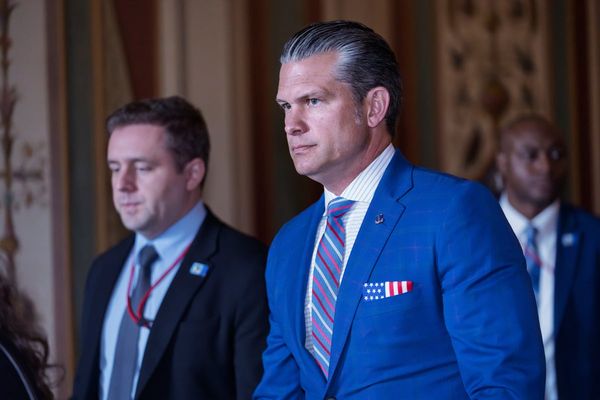
Ever since Thomas D Rice became the “father of American minstrelsy in the 1830s”, Black people have been mocked, bullied and humiliated by white performers darkening their skin to portray Blackness. Blackface runs the gamut of culture, appearing everywhere from Shakespeare productions to David Baddiel “impersonating” footballer Jason Lee on TV. But in 2023, the pendulum has swung in the other direction, with films, television shows and cartoons trying to erase blackface from its records.
As David Harewood on Blackface shows, scenes in which Fred Astaire, Bing Crosby and Judy Garland use blackface are now often edited out of their otherwise family-friendly movies. Many of the films and TV shows Harewood explains were once “mainstream British culture” can now only be found in archives where they are gathering dust, “shelved and put out of sight because the subject is too difficult or uncomfortable for people to face”.
Harewood once again proves himself a confident and charismatic documentary presenter, surrounding himself with an ensemble of historians, actors and musicians. Together they track the history of blackface from Victorian performers to The Black and White Minstrel Show, which was watched on the BBC by upwards of 20 million people at its peak and broadcast until 1978.
For Harewood, blackface is not just a racist curio but a deeply personal subject. Growing up in Birmingham in the 1960s and 70s, he remembers it being “everywhere”. By the turn of the 21st century, minstrelsy had been relegated to ill-advised Halloween costumes, “edgy” comedy and Ricky Gervais gags about hiding your “golliwog” from Black dates. It became viewed as a relic of the time when naive people simply didn’t know any better, but as the programme uncovers, the reality is truly horrific.
Blackface performance emerged out of the end of slavery. As David Linton, head of acting at the Guildhall School of Music and Drama, explains: “The emergence of blackface minstrelsy is reflective of the dominant group trying to stay in control of the narrative.” Rice’s character Jim Crow became a common archetype in the genre, a buffoonish enslaved man in rags. While versions of Jim Crow (such as the head crow in the Disney classic Dumbo) may seem harmless, the historian David Olusoga (there are a lot of Davids in this programme) goes through the papers of the times with Harewood, from when Rice had become a star of the West End. He reads aloud how Rice’s motives were more straightforwardly pernicious. The American actor would end his show by explaining that the British people “were under the impression that negroes were naturally equal to the whites and their degraded condition was consequent entirely upon our ‘institutions’, but I effectually proved that negroes are essentially an inferior species of the human family and they ought to remain slaves”.
The documentary’s strengths come from showing the myriad ways the seed of blackface grew over the decades and by confronting how generations of white people were fed insidious stereotypes. For young Black men of Harewood’s generation, some scars remain from figuring out their Black identity while being inundated with minstrelsy. In one of the most moving moments, Olusoga projects a film of Victorian street performers dancing in blackface to delighted crowds. Beyond showing how commonplace the present taboo was, Olusoga points out: “It’s art, and art isn’t a cherry on the cake of life. It is life. And this is racism literally made into an art form.” But worse yet, he points out the smiling children in the footage absorbing the idea that Black people are “either savages in Africa or happy-go-lucky simpletons in America”. These children will form the generation that would “welcome” the Windrush generation to Britain’s shores.
Harewood makes a compelling case for confronting and not erasing this difficult history. And how doing so amounts to more than Baddiel mumbling an apology to Jason Lee, strategically editing the 1936 Fred Astaire film Swing Time or removing gollies from pub displays. The stereotypes of minstrelsy that he uncovers still abound, and a narrow view of Blackness is still stifling for many Black Britons.
Harewood meets Adrian Lester at the Globe, and they reflect not just on the times they played Othello (and how they were compared to Laurence Olivier’s blacked-up Othello) but also how their industry and audiences have regularly been confounded by them as Black men. The idea of Blackness is still so set by stereotypes, Lester believes that his not conforming to one simply “does not compute”. So while Harewood does not seek to make audiences feel bad about the pop culture they grew up with or ruin their childhood memories by pointing out how, technically, Felix the Cat was an agent of white supremacy, the programme is worthwhile viewing regardless of your race or age.
A little discomfort is a price worth paying to see Harewood, Lester, Linton and Olusoga speak truth to power on the same channel that was once broadcasting minstrels into their living rooms.
• David Harewood on Blackface was on BBC Two and is available on BBC iPlayer







